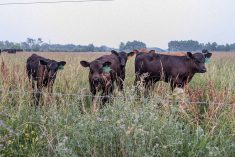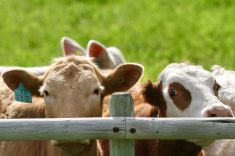The challenges facing European farmers are split across geographic lines.
Among the 15 nations of the European Union the main farm issues are declining government subsidies and surplus production, as opposed to central and eastern European countries where lack of government support and poor crop yields impede progress.
Erwin Reisch, of the University of Hohenheim in Stuttgart, Germany, outlined the multi-layered challenges for Europe during the international farm management congress held at Calgary in July.
Largest in the world
Prosperity in the European Union has made it the largest agricultural producer in the world although agriculture’s contributions to each member country’s gross national product varies.
Read Also

U.S. farm group supports supply management
U.S. grassroots farm advocacy group pushing new agriculture legislation that would move towards supply management like Canada has for dairy industry
In Sweden, 0.7 percent of the GDP is derived from agriculture. It is highest in Greece at 9.8 percent. While agricultural trade values are high, most of the trade is within Europe, said Reisch.
In the EU, government support is high. As of 1995, 48 percent of the average farm income was derived from subsidies compared to 23 percent in the United States.
Demands by the world trade agreement to lower support creates uncertainties about declining incomes and the question of how to handle surpluses, said Reisch.
“Surplus production is a threat to western European agriculture.”
EU farmers produce 26 percent more sugar than the EU needs, nine percent more poultry, seven percent more grain , 17 percent more milk powder, 10 percent more beef and five percent more pork. All the surplus must be exported.
Changing the system presents a major challenge because many countries use a centuries-old agricultural structure. Many individual land holdings are small and costly to run.
“Production is not a problem but farm size and farm income is,” said Reisch.
Only 2.6 percent of farms have more than 250 cultivated acres. Most are smaller than 50 acres.
In Portugal, 95 percent of farmers have less than 50 acres.
The small operators must expand, become more specialized, or farm part time until they ultimately leave the business, Reisch said.
In central Europe, farmers are playing catch up with the west.
There are 10 countries in the group including Poland, Hungary, Lithuania, Estonia and Romania. Their GDPs are modest but improving, with the best results reported by Poland.
These are agrarian countries. In Poland, for example, 25 percent of the population is rural. Among Romanians, 35 percent are farming.
Many central European nations live in volatile political situations and face a number of cultural changes since they are no longer controlled by the communist regime.
Unfamiliar government
In the West, the population is accustomed to democratic government, laws, regulations and personal freedom. They have access to credit and understand taxation to support social networks. This is not the case for many of the countries in central Europe, said Reisch.
Reforms there have been slow. Within the former Soviet Union, state farms were divided among workers resulting in about 11 million private farms with holdings of less than 50 acres.
Crop yields are poor and livestock numbers have dropped by 30-50 percent. Farmers have worn out old equipment and there is a shortage of gasoline and diesel fuel.
As well, cash crops are often grown to earn hard currency rather than to produce food for the nation.















